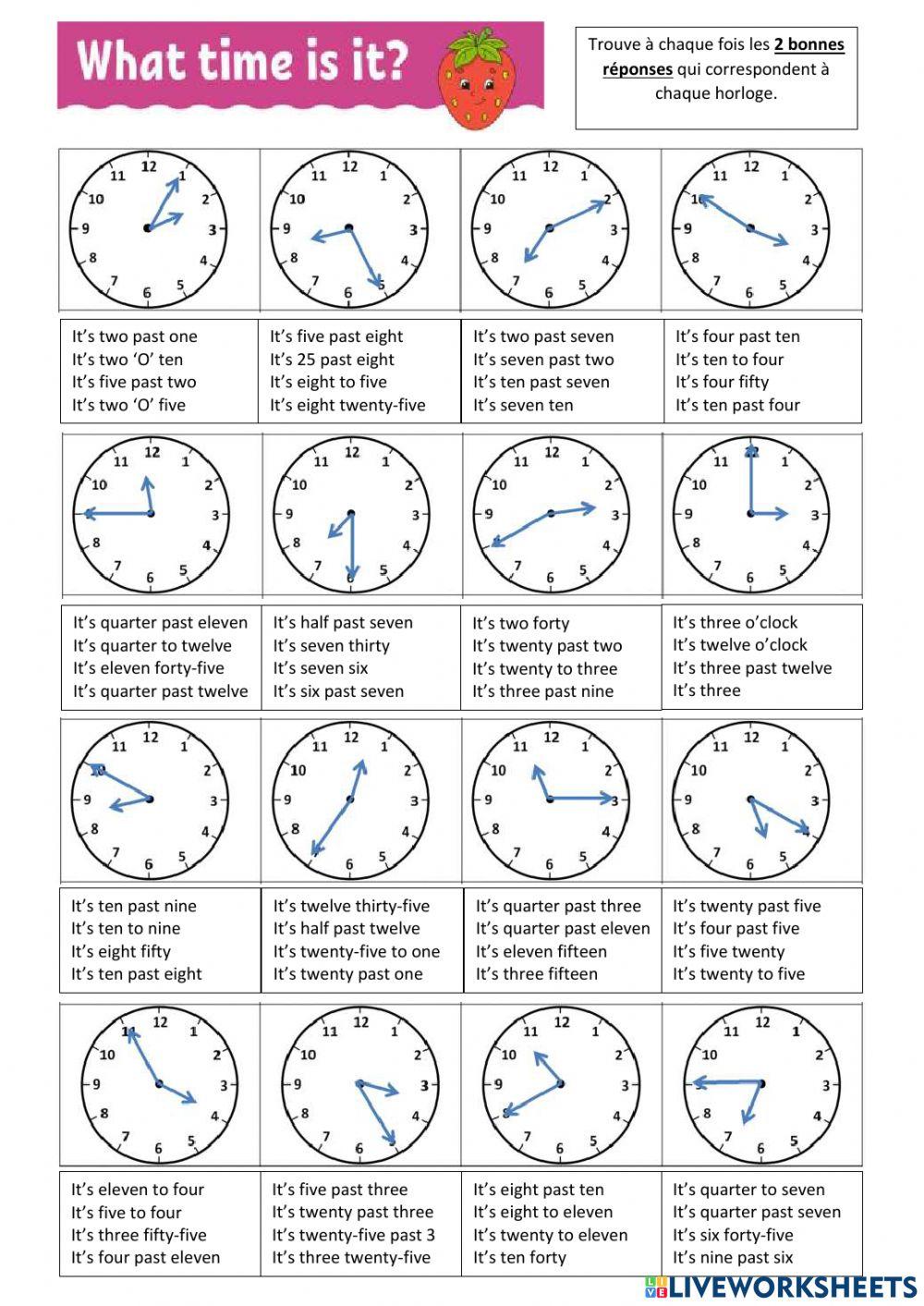Loading ad...
Member for
3 years 3 monthsAge: 9-15
Level: 6ème
Language: English
(en)
ID: 698715
06/02/2021
Country code: FR
Country: France
Main content: Telling the time (2013183)
Tell the time
Share / Print Worksheet
